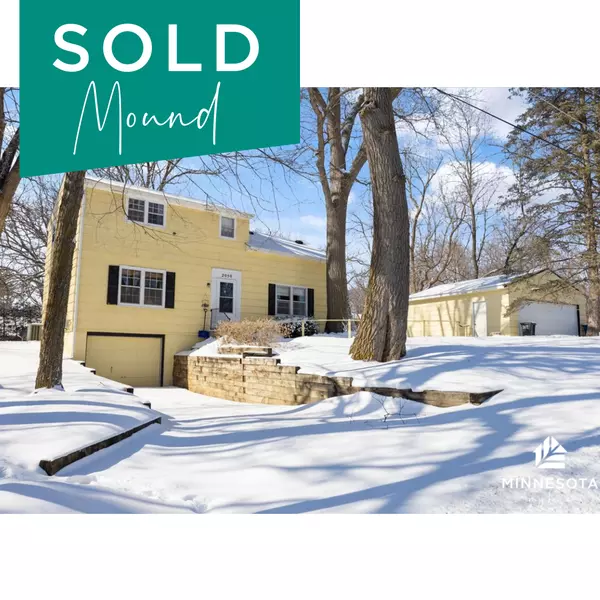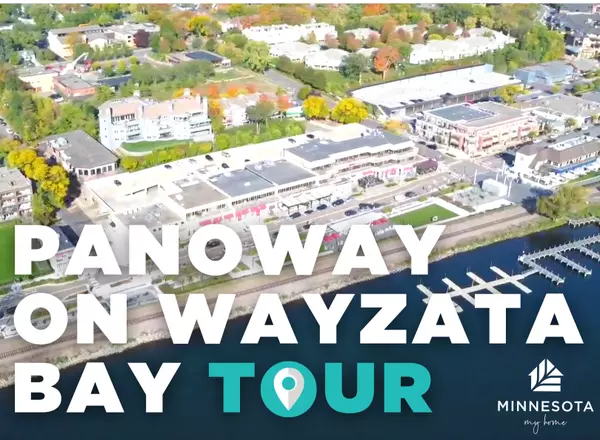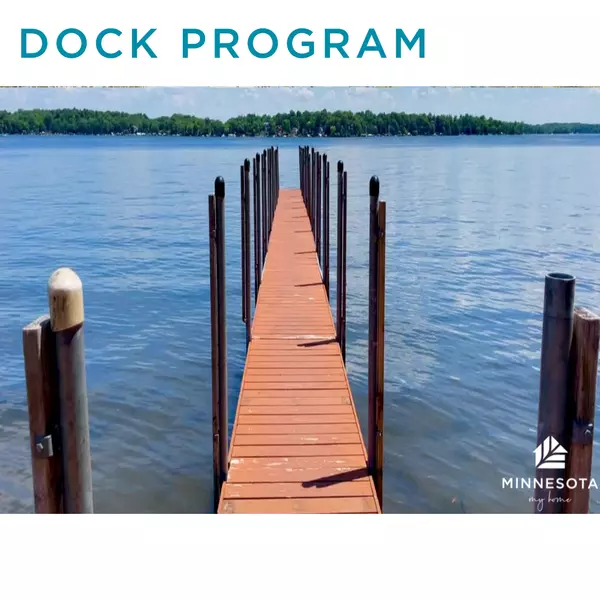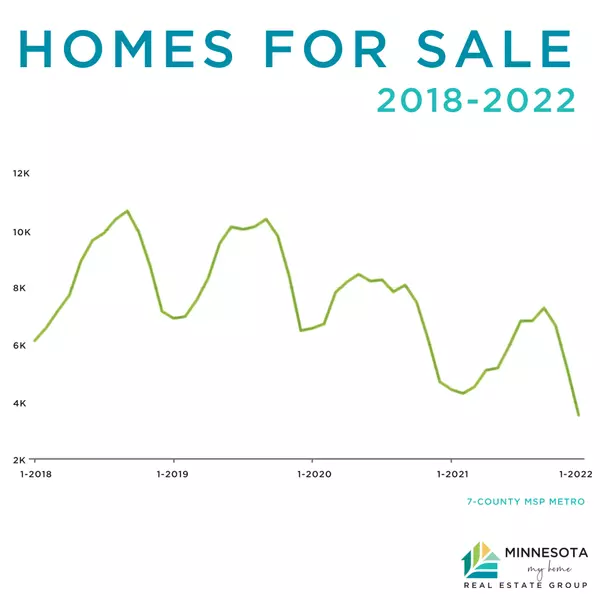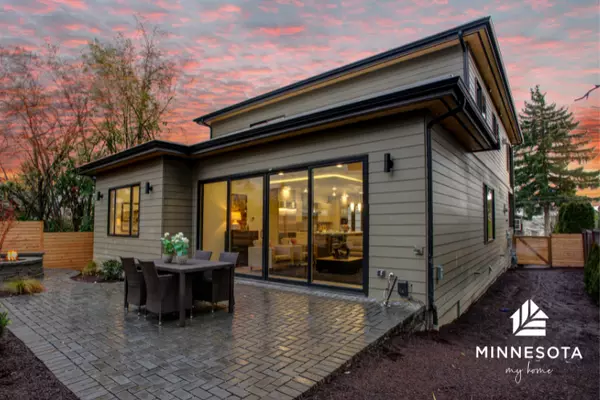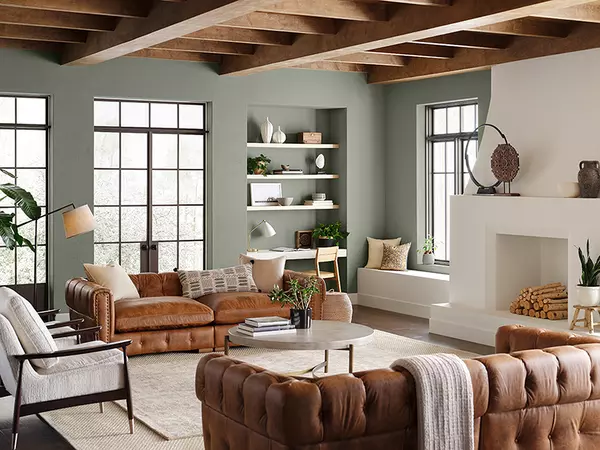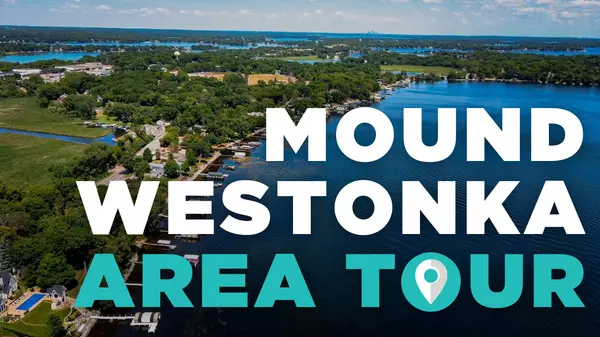

Horse Property For Sale in MN
9060 County Rd 26, Minnetrista, MN 55359 This one-of-a-kind, income producing horse estate is situated on a private and scenic setting and is highlighted by 325 feet of private lake shore. Take in these lake views while sitting by your private in-ground pool or on your wrap around deck or simply entertain inside with your dream gourmet kitchen within the open main living area. The large owners suite with private bath is just one of three bedrooms on the upper level while the walk out lower level has full living quarters and is ready for a caretaker or guest. Significant investments have been made in the creation of this remarkable equestrian property and include a 16072 heated riding arena with viewing room, heated barn with 8 1212 box stalls, wash bay and tack room and new wood/electric fencing that surround the outside arena and paddocks. Features of this 10-acre property with home and Safe Haven Stable in Minnetrista, MN: 325 feet of lake shore on Ox Yoke Lake10 acres with amazing viewsPrivate in ground pool and wrap around deck160*72 indoor heated riding arena with viewing roomBarn with 8 box stalls, wash bay and tack room5 pastures with 3 auto waterersGourmet kitchen and open floor planFull living quarters in lower level walk out Learn more about this horse property for sale in Minnesota.
Read More

Wayzata, MN – City on Lake Minnetonka
Is Wayzata a Good Place to Live? When choosing a home in the Twin Cities, the draw of the Lake Minnetonka area is hard to resist. Of the many communities surrounding the lake, Wayzata offers everything a family desires for work, school, and play. How Far is Wayzata from Minneapolis? Located about 11 miles west of downtown Minneapolis, just west of the Interstate 494/394 corridor, it takes roughly 15 minutes to drive from Wayzata to downtown Minneapolis. It’s a quick commute to many workplaces and offices in the metro. Wayzata is located on the lower lake of Lake Minnetonka, basically the northeast part of the lake. What Does Wayzata Mean? The name Wayzata is derived from a Lakota Sioux phrase meaning “North Shore.” The city is located on the north shore of Lake Minnetonka. Wayzata Businesses Wayzata is also home to several local and national businesses, including banking, real estate, investment and legal services. Retail options abound, with a terrific mix of well-known apparel for the whole family, and quaint specialty shops carrying everything for your home and more. View a list of Wayzata chamber members. Wayzata School District Wayzata schools are consistently rated among the top in Minnesota. Public and private schools. There are nine elementary schools throughout the district, preparing students to enter the three middle schools and onto Wayzata High School. Academics, athletics and theater and arts programs offer a wide variety of opportunities for students of all abilities and talents. The exceptional and award-winning Wayzata High School boasts 25 National Merit Finalists, consistently ranks in the top 10 of school districts in Minnesota and has been ranked by Newsweek on its list of the 1000 top public high schools in America. Wayzata High School (WHS) is actually located to the north in Plymouth, MN. Is Wayzata MN Safe? Wayzata is one of the safest cities in the Twin Cities metropolitan area. There is a strong sense of community, neighborhood care, and dedicated law enforcement and fire departments that contribute to the well-being of all its residents. Many families walk or bike to work and school, making Wayzata a healthy and active place to live. Wayzata Restaurants Dining out in Wayzata has something for everyone. Families with children will be happy to find pizza, ice cream, sandwiches and burgers to take to the park or beach, and a whole host of diverse offerings. When the grown ups need a night out on the town, they can choose from sushi and tacos, an elegant steak house, top-notch fish and seafood, or intimate fine dining. There’s always a nightcap waiting at several local pubs and bars. View the best Wayzata MN restaurants as ranked by Yelp or make a reservation. The bar at 6Smith Restaurant What to Do in Wayzata MN If you love lake life, Wayzata will feel like home immediately. Summer, of course, brings the best of boating, sailing and water sports. Families in Wayzata who live off the lake can enjoy endless beach days, and may even choose to keep a boat at a public-access dock slip. And it’s not just summer fun to be had on the lake! Fall colors burst throughout the town and lakeshore and make for colorful memories. If you love winter, you’ll have many reasons to get out and enjoy the frozen lake, including ice fishing, skating, cross country skiing, and snow shoeing. Wayzata Events Year-round community events are one of the perks of calling Wayzata home. Summer brings the Wayzata Farmers Market, Music by the Lake concerts and the Lake Minnetonka Summer Splash and Art Experience. Wrapping up summer is the popular James J Hill Days festival, which includes concerts, carnival rides, dachshund races, and parade. Don’t miss the holiday shopping fun and decorations in December, and the Wayzata Chilly Open combines an “only in Wayzata, MN” event – the Chilly Open – where you’ll find a golf tournament on the ice! Check out the Wayzata Chamber event calendar. James J. Hill Days in Wayzata, MN Wayzata Real Estate Wayzata real estate values continue to climb, making a home purchase in the area a great investment. Whether you’re looking to put down permanent roots or choosing Wayzata as a place to raise your growing family, you’ll feel great knowing your home value will only increase over time. Here are a few Wayzata real estate stats: $1.5M – Average sales price of Wayzata homes$1.3M – Median sales price of Wayzata homes Learn more about Wayzata real estate. Wayzata MN Homes for Sale Take a look at the current Wayzata, MN real estate listings found here: Wayzata Homes for Sale and find the neighborhood and home of your dreams! You’ll want to work with a Wayzata real estate agent, someone that knows the city and the lake area. Contact Minnesota My Home Real Estate today to learn more about selling and/or buying your Wayzata, MN home.
Read More

Color Trends and Color of the Year 2021
PANTONE 17-5104 Ultimate Gray + PANTONE 13-0647 Illuminating Pantone calls this duo “a marriage of color conveying a message of strength and hopefulness that is both enduring and uplifting.” Why we love it – the bright pop of yellow is a ray of sunshine after the tough year(s) we’ve had. It’s optimistic and bright and lovely! The grey grounds it and brings a subtle neutral. Also, gray has been popular for years so you probably have some gray to work with in your house already. In home decor, we expect to see this combo of colors throughout the home–indoor and out. Look for Ultimate Gray as a wall color with pops of Illuminating in accents like pillows, blankets, wall art, furniture, etc. Our advice? Keep the Illuminating yellow color to accessories that can be swapped out when the next color trend takes over. How to incorporate the colors of the year in your home Here are some ideas on how to bring these colors into your home: Bedroom: Choose textiles with both colors incorporated, grey walls or floors with yellow pillows or a yellow throw. Incorporate the yellow on the walls with art or on the floor with a bright rug. Bathroom: Use Ultimate Gray for the walls, tile and/or backsplash. Choose towels that incorporate both colors in a pattern or bright yellow towels. Bring it even further with yellow hand soap – try Mrs. Meyer’s Honeysuckle Liquid Hand Soap – looks and smells clean. Kitchen: Incorporate yellow hand towels, a yellow vase with white flowers or a gray vase with yellow flowers, yellow and gray napkins and placemats, yellow chairs, etc. Exterior: Try painting your house yellow with white trim and pops of gray with shutters or deck color. We painted our deck gray with white railings a few years ago–adding yellow outdoor pillows, candles and accent tables would look great. Or go smaller by just painting your front door yellow to really make it pop. Go even smaller – plant yellow flowers that are beautiful and smell like sunshine. From Pantone: “For over 20 years, Pantone’s Color of the Year has influenced product development and purchasing decisions in multiple industries, including fashion, home furnishings, and industrial design, as well as product packaging and graphic design.” Sell your home in 2021 Thinking of selling your home? We suggest using these colors to stage your home and we’ll definitely be using the colors with our virtual home staging and normal (real!) staging. Thinking of selling your home with Andrew & Tiffany Beitler of Minnesota My Home? Even better! We’d love to talk to you! Get in touch today – (612) 432-3873 or andrew@mnmyhome.com.
Read More

Is Mound MN a Good Place to Live?
A quick snapshot: Mound is a city in Hennepin County, Minnesota, United States. The population is 9,480. Mound is the birthplace of the Tonka truck, named after Lake Minnetonka. The Tonka Toys headquarters was originally in Mound, but moved to facilitate material deliveries. Mound is about twenty miles west of downtown Minneapolis, the county seat. Mound is one of several cities that has Lake Minnetonka lakeshore and beaches. Living in Mound, MN I grew up in Mound and have lived in the area for the majority of my life. I’ve lived in Minneapolis, Blaine, Orono and even spent a college semester in London but I keep coming back to Mound. Here’s why. Lake Minnetonka. Mound is wrapped around the upper lake of Lake Minnetonka. I grew up on Cooks Bay and every activity in the summer was centered around the lake. Meeting friends on waverunners, boating, wakeboarding, waterskiing, you name it. Even if you didn’t live on the lake, you could hitch a ride on someone’s boat to spend the day on the lake. Surfside Park. The beach at Surfside Park is a huge draw. The park features a boat launch, beach, playground, rentable community building, fishing pier and picknicking area. Spend summer evenings here listening to live music, playing volleyball or just looking at the beautiful water. The Surfside Park Depot is a popular community building available for celebrations such as grad parties, birthdays and showers. The Highly-Rated Westonka School District. It’s entirely possible that I’m biased because I am an alumnus of Westonka (Go Whitehawks!) but Westonka Public Schools are always ranked among the top school districts in the state, according to data recently released by ranking and review website Niche. The teachers are absolutely amazing–I still keep in touch with some of my teachers from high school because they made an impact on me.Here are the 2021 ratings: Smaller School Feel with Big Opportunities. With 2,447 total students and a student-to-teacher ratio of 17:1, students get the attention they deserve from teachers, the ability to get to know each one of their classmates and make a name for themselves and the opportunity to participate in numerous clubs, sports and extra-curricular activities. This is my favorite thing about the Mound Westonka schools – I was able to be in MadJazz, Popsingers Show Choir, play tennis, softball and gymnastics and be elected to student senate and National Honor Society–to name a few. You really have the opportunity to shine at Westonka and I have the absolute best memories from being in a ton of activities.One thing to note is that, at this time, there is no Spanish (or other language) immersion offered which I know is important to some families. Small Town Feel. With a population of 9,480, Mound is a smaller community than some of the other cities on Lake Minnetonka. It’s a little quieter, less flashy, there’s not a bustling main street lined with restaurants and retail–it’s more residential than Wayzata and Excelsior. Mound MN Real Estate There’s something for everyone! There is a wide range of homes in the Mound area from large houses with lakeshore to modest homes more inland. View Mound MN homes for sale, average sales price, median sales price, recently sold listings, demographics and more on this Mound, MN Neighborhood Overview. Restaurants in Mound View a map of the Mound MN restaurants In Mound:Al & Alma’s Supper Club & Charter CruisesCarbone’s Pizzeria Bar & GrillDakota JunctionDomino’s PizzaJade PalaceScotty B’sSubwaySurfside Bar and GrillNearby:Asian BistroBack Channel Brewing CoLord Fletcher’s Old Lake LodgeMinnetonka Drive-InPapa Murphy’s Take ‘n Bake PizzaThe Lake RoomThe Narrows SaloonVann Restaurant Get $5 off the Lake Minnetonka Eats cookbook with promo code MNMYHOME Things in Mound to Check Out Westonka Dog DaysSpirit of the Lakes FestivalMound Farmers MarketMound Fire Department Annual Fish Fry & DanceMN Wake Surf CompetitionOur Lady of the Lake Incredible Festival Running of the Bays 5K Run & Half MarathonTonka Brew Fest Spirit of the Lakes Festival Fireworks Questions about Mound? Ready to find your Mound, MN home?Feel free to reach out! Andrew Beitler: 612-432-3873 or andrew@mnmyhome.com Tiffany Beitler: 612-799-1643 or tiffany@cooksbaymarketing.com Learn more about who the heck we are. City of Mound website.
Read More

Minnesota 2021 FHA Loan Limits
For 2021, the maximum loan limit in Minnesota is $356,362 for a single-family home and $774,050 for a four-plex. Limits varies by county. The minimum loan limit is $5,000. To qualify for an FHA loan in Minnesota, your home loan must be below the local FHA loan limits in your area. Loan limits vary by county and home size. In addition to loan limits, to qualify for an FHA loan you must live in the home as your primary residence. If you’re purchasing a multi-family home, the monthly Fair Market Rent (FMR) for the property must exceed 1% of the purchase price. FHA loans cannot be used for commercial real estate investment purposes or “flipping” homes in Minnesota. According to BankRate.com, these are the 2021 Minnesota FHA loan limits by county: CountyGSE 1-unit limitFHA 1-unit limitAitkin$548,250$356,362Anoka$548,250$382,950Becker$548,250$356,362Beltrami$548,250$356,362Benton$548,250$356,362Big Stone$548,250$356,362Blue Earth$548,250$356,362Brown$548,250$356,362Carlton$548,250$356,362Carver$548,250$382,950Cass$548,250$356,362Chippewa$548,250$356,362Chisago$548,250$382,950Clay$548,250$356,362Clearwater$548,250$356,362Cook$548,250$356,362Cottonwood$548,250$356,362Crow Wing$548,250$356,362Dakota$548,250$382,950Dodge$548,250$356,362Douglas$548,250$356,362Faribault$548,250$356,362Fillmore$548,250$356,362Freeborn$548,250$356,362Goodhue$548,250$356,362Grant$548,250$356,362Hennepin$548,250$382,950Houston$548,250$356,362Hubbard$548,250$356,362Isanti$548,250$382,950Itasca$548,250$356,362Jackson$548,250$356,362Kanabec$548,250$356,362Kandiyohi$548,250$356,362Kittson$548,250$356,362Koochiching$548,250$356,362Lac Qui Parle$548,250$356,362Lake$548,250$356,362Lake Of The Woo$548,250$356,362Le Sueur$548,250$366,850Lincoln$548,250$314,827Lyon$548,250$314,827Mcleod$548,250$314,827Mahnomen$548,250$314,827Marshall$548,250$314,827Martin$548,250$314,827Meeker$548,250$314,827Mille Lacs$548,250$366,850Morrison$548,250$314,827Mower$548,250$314,827Murray$548,250$314,827Nicollet$548,250$314,827Nobles$548,250$314,827Norman$548,250$314,827Olmsted$548,250$314,827Otter Tail$548,250$314,827Pennington$548,250$314,827Pine$548,250$314,827Pipestone$548,250$314,827Polk$548,250$314,827Pope$548,250$314,827Ramsey$548,250$366,850Red Lake$548,250$314,827Redwood$548,250$314,827Renville$548,250$314,827Rice$548,250$314,827Rock$548,250$314,827Roseau$548,250$314,827St. Louis$548,250$314,827Scott$548,250$366,850Sherburne$548,250$366,850Sibley$548,250$366,850Stearns$548,250$314,827Steele$548,250$314,827Stevens$548,250$314,827Swift$548,250$314,827Todd$548,250$314,827Traverse$548,250$314,827Wabasha$548,250$314,827Wadena$548,250$314,827Waseca$548,250$314,827Washington$548,250$366,850Watonwan$548,250$314,827Wilkin$548,250$314,827Winona$548,250$314,827Wright$548,250$366,850Yellow Medicine$548,250$314,827 Related links: What is an FHA loan? Get help with a down payment.
Read More

What is an FHA Loan?
You hear this term thrown around all the time when you start in your home buying journey but do you really know what it is? We’ll explain it for you: An FHA Loan is one that the Federal Housing Administration (FHA) – which is part of HUD – insures the loan, so your lender can offer you a better deal. These loans can offer: Low down paymentsLow closing costsEasy credit qualifying Sometimes called “helper loans,” FHA loans are designed for buyers who may have less cash to put down at closing or who have a less-than-perfect credit score. But because the FHA/HUD takes on more risk by lending to these buyers, there are also limits on how much buyers borrow when securing an FHA loan. Nearly 20% of today’s buyers will purchase their home using an FHA loan. FHA Loans are utilized often by first time home buyers because your down payment can be as low as 3.5% of the purchase price. But did you know that FHA loans aren’t just for first-time home buyers? It’s a common misconception but you can also include the costs of energy improvements into an FHA Energy-Efficient Mortgage. If you want to talk to a lender about the possibility of getting an FHA loan, we’re happy to direct you to local lenders we trust. Getting pre-approved is always a great idea before you start your home search so you know what you can afford. Learn more about mortgage loan types and financing your home. Find help for a down payment on a house Need help with your downpayment? The state of Minnesota and local governments offer programs that can help. These down payment programs can help you save on your down payment and buy sooner. We’ll help you find programs that you are eligible for. Use our free tool to find homebuyer programs for down payment help, closing costs, tax credits and more. What can you afford when buying a home? Check out our Home Affordability Calculator to determine how much house you can afford. By entering details about your income, down payment, and monthly debts, you can estimate the mortgage amount that works with your budget. `
Read More

Is It Okay to List My Home for Higher than the Assessed Value?
Wondering if it’s okay to list your home for higher than the assessed value, and see if anyone “bites?” Many would-be sellers have the mentality that they can and should list their homes high and see if they can score a high offer. If they aren’t in a hurry to sell, these homeowners believe they can lower the price tag down the road if the offers don’t flood in initially. However, this theory is a common home seller myth. Why? Well, most buyer demand comes within the first two weeks of being on the market. During this initial listing phase, you can expect: Your home’s listing will gain attention online and through email alerts to potential buyersInterested local buyers to tour your home at a showing or open house As a seller, you’ll want to optimize the initial buzz of your home listing. But if buyers are turned off by the price tag, you may find your home lagging on the market. Buyers may assume that something is wrong with the house or conclude that it’s overpriced. The result? Sellers may end up receiving even lower offers than if they would have if they’d priced their homes fairly to start with. Thinking of or getting ready to sell your home? View our Sellers page for more information on how we sell homes and contact us today.
Read More

Impact of COVID-19 on Real Estate Showings
The initial drop in showing activity experienced throughout much of the country in the early weeks of the COVID-19 pandemic has given way to modest signs of stabilization. Through mid-March, year-over-year showing activity was higher nationwide compared to 2019. The current volume is indicative of the industry’s response to COVID-19, which is changing daily. The charts are updated daily to reflect the most recent data on showings. VIEW THE CHARTS The data points represent a rolling weekly average in ShowingTime’s 100 top markets, with each market recording tens of thousands of appointments in 2019 and 2020. ShowingTime is the leading market stats and showing management technology provider to the residential real estate industry.
Read More

How to decorate your fireplace mantle for Christmas
Living in Minnesota, we like to decorate heartily for Christmas with warmth and brightness. Then it truly feels like Minnesota My Home! This look works whether you live in a mansion on Lake Minnetonka or a small home in the middle of Minneapolis! The key to having a holiday-ready fireplace? Think in threes: 1. Have a wreath or art piece to make a decorative statement above the fireplace. 2. A mantel outfitted with greenery, baubles and tchotchkes. 3. Stockings or some other decoration on the front of your fireplace. We had these stockings made by a family friend this year to make them extra special! Here’s our fireplace at the Beitler home – Merry Christmas!
Read More

Investment Properties in MN: Make Money from Real Estate
Are you thinking of making an investment that could bring you ongoing passive income? If you are, real estate is the way to go. However, there are a handful of things to do up front to ensure you see future success. Read on for tips that will set you up for a profitable journey. Is Real Estate a Good Investment? If you’re still on the fence about whether real estate is a good investment, understanding some benefits can help put your mind at ease, including a steady source of income and how surprisingly easy it is to get started. What’s more, the demand for rental housing is steadily increasing, with more than a quarter of Americans choosing to live in a rental these days. So, the question isn’t really whether or not to move forward, but how? Decide on Funding It’s important to recognize that lenders are more strict on loans for investment properties, largely because you aren’t required to carry private mortgage insurance on an investment. That means most lenders will require you to pay 20 percent or more as a down payment. Your interest rate will vary in accordance with how big your loan is, your credit report, and your down payment amount. You can use this tool to explore various loans and interest rates. Another financial basic is to tally your monthly expenses and the cost of housing in your market (Minneapolis home sales average $314,000). You’ll want to consider some of the hidden costs associated with an investment property, such as legal fees, ongoing maintenance, bad tenants, and extended vacancies. Once you’ve set your budget, it’s time to connect with an experienced and dedicated realtor. Not only can expert realtor Andrew Beitler put you in a home you’ll love, but he can walk you through the entire home-buying process, including determining your budget, getting preapproved for mortgage, home inspection, and closing. Reduce Your Risks One way to put yourself at less risk for many hidden costs is to hire a professional property manager, whether you’re renting your home short or long term. A property manager can handle the rental application process, run background checks, and weed out questionable applicants. They’ll take care of the general management of the property, ensuring things are kept in order and running smoothly. It’s a chance to lower your stress, reduce your risks, and cut your workload. And by keeping the property in top condition, you’re sure it will be a hot commodity for renters. Make sure you hire a manager who will make you look good, supporting both you and your tenants around-the-clock. Look for a management company that will allow your tenants to easily book your rental online. Change Your Name When you’re purchasing an investment property, one of the other important ways you can protect yourself is to purchase it under a business’s identity. You’ll want to either do so as an LLC or LP — a limited liability company or a limited partnership. Basically, an LP has certain limitations on who can run it, and an LLC can have as many or as few people involved as necessary. This way, if your rental should fail for some reason, or if someone slips, gets hurt, and sues you, you won’t go bankrupt and lose your personal assets. A real estate attorney can help you sort through the details of an LLC or LP, but if you already know what you want you can apply right away. How-to details vary by location; for information on how to form an LLC where you live, check out this guide from NOLO. Registered Agent Inc., meanwhile has information on getting your LP up and running. Decide on Size One of your biggest decisions is what type of rental you’re going to offer — a vacation property, business rental, short- or long-term residential, single- or multi-family. Many people decide to start small and go bigger, especially if they intend to tackle the landlord duties themselves. Housecall points out you should weigh the pros and cons of each rental type and size when making your decision. For instance, single-family rentals can be more challenging to sell if the economy tanks, and multi-family rentals can mean big utility bills. Many first-time investors can find it challenging to wade through the ins and outs associated with buying a rental property. Take your time and do things the right way for the best results. Ensure that you put yourself at the lowest risk possible, and think through the advantages and disadvantages of various property types. You can look forward to a profitable undertaking with smart, well-thought-out investment strategies. -Katie Conroy, advicemine.com Start looking for potential rental or investment properties here.
Read More

Negotiate After an Inspection
Negotiations often take place after a home inspection, and the home inspector frequently gets put in the middle of it. The role of a home inspector is never to decide what should or shouldn’t be negotiated as part of a home purchase, assuming anything gets negotiated. That’s a job for the real estate agent. This blog is about negotiations after the inspection. Part 1: What is a Home Inspection Before a home buyer even has a home inspection, it’s important to know what the home inspection is all about. A home buyer hires a home inspector to learn about the home, and the inspection report is the document that the buyer is left with, detailing the results of the inspection. The inspection report is not a repair list for the seller, nor is it a stick to beat the seller with on price. Most home inspection reports will have a large list of recommendations, typically for improvements, repairs, and safety upgrades. This is normal for a used house. Issues that come up during a home inspection may be negotiable, but there are no hard and fast rules about repairs that sellers need to complete as a result of a home inspection. In fact, here in Minnesota where home inspections are not regulated, there are no rules at all. When a home inspector finds defects during a home inspection, there are four choices for a buyer: Renegotiate the price With this option, the buyer can hire their own professionals to do the work, and they can oversee the whole project after they own the house. This is a common approach, but it’ s not always a practical approach because it doesn’t leave the new home buyers with any cash to pay for repairs. Cancel the purchase agreement This typically happens when the buyer decides there are too many issues with the house, or the issues are greater than what the buyer wants to deal with or when buyers and sellers can’t come to an agreement. Ask the seller to perform repairs When asking a seller to perform repairs, it’s important to be specific. Say exactly what should be done, by whom, permits pulled, inspected, and approved, when the work should be completed by, and documentation provided to the buyer by a certain date. Do nothing This is often the best option for buyers. When buying a used home, buyers shouldn’t expect things to be perfect, because they never are. Walls get damaged, showers leak, appliances fail without notice. This doesn’t mean buyers shouldn’t address defects after they’ve bought the house, but it’s unrealistic to expect sellers of used houses to fix every little defect. Asking sellers to address a long list of minor repairs will make the seller feel defensive about their home and make the buyers look petty. Part 2: Stuff that shouldn’t be negotiated We at Structure Tech and Minnesota My Home are not real estate agents nor attorneys, so this is not real estate advice or legal advice. These are our opinions. We don’t share these opinions on negotiations during home inspections, nor do we share them in our inspection reports. This is completely outside the realm of a home inspection, and honestly, it’s outside the realm of our area of expertise. Nevertheless, we certainly have opinions about this stuff. The following is a list of things that we generally feel should not be negotiation items as a result of a home inspection. Known conditions = no negotiations No price or repair negotiations should take place regarding conditions that were known prior to the home inspection. If a condition is readily visible or apparent, it’s not something that was “discovered” during the home inspection. A few examples of known conditions include: Peeling paintDamaged interior wallsDamaged floor coveringsDeteriorated driveways or walkwaysAny conditions listed in the Seller ’s Property Disclosure Statement If any of these are going to be negotiation items, they should be negotiated before the inspection. Old = no negotiations We frequently hear discussions of old components or components that are at or near the end of their service life expectancy. This shouldn’t be a negotiation item. Technically, the buyers can ask for anything, but to ask for replacement of a fully functioning used or old component in a fully functioning used or old house is a bit much. Here are a few things that need to be periodically replaced on homes: WindowsFurnaceAir ConditionerWater HeaterAppliancesGarage door opener On the other hand, if a home seller advertises a “new” feature, but that information is not accurate, that would be a completely different story. Also, if a home buyer discovers numerous items at the end of their life and they know they won’t be able to afford replacements soon, they might decide that the home they’re buying isn’t the right one for them… unless perhaps the seller would like to help out. It’ s not unreasonable to renegotiate at this point, but a price negotiation typically won’t help a buyer, because this doesn’t give the buyer any more cash to deal with repairs or replacements. Minor defects = no negotiations Used houses aren’t perfect. Part of being a homeowner means spending time and money on the house. This is something that home buyers must accept and plan for. Here are some small, petty things that we feel home buyers shouldn’t ask sellers to address: Missing cover plates at outlets, switches, and junction boxesMissing caulkDirty furnace filterDirty AC condenserDamaged insect screens Code changes / safety upgrades / energy upgrades = no negotiations While a home inspection is not a code compliance inspection, home inspectors often recommend safety upgrades due to changes in building codes. It’ s bad form to ask a seller to make these types of upgrades. That’s not to say these safety and energy upgrades are not important, but we believe they make for somewhat petty negotiation items. A few of these conditions include: Lack of AFCI devicesLack of GFCI devicesLack of safety glazing in hazardous locationsAnything related to stairway safety, including wide spacing on stairway balustersProtection of the municipal water supply against backflowMinimal attic insulation Of course, there are always exceptions. If new work was performed at a home and advertised as such, it’s only fair to expect the work to be done properly. In closing, if a home seller is already upset because they’re selling their house for less than they wanted, they won’t be happy to receive a list of small chores from a home buyer in the form of a purchase agreement amendment. This can be the straw that breaks the camel’s back, leading to the deal falling apart. We hate to see this happen because items that cost hundreds of dollars to fix should never hold up the sale of a property that costs hundreds of thousands of dollars. Our advice to home buyers is to not put yourself in that position. Treat the home purchase like a relationship; do you want to be right, or do you want to be happy? Let the little stuff go. Part 3: Reasonable Negotiation Items For this section, we’re covering some common home inspection findings that are frequently negotiated. We’re not saying these items should be negotiated, but these are common items that get negotiated, and we don’t feel thatany of these things are unreasonable. What all of these items have in common is that they’re usually expensive, not obvious, or take special knowledge to recognize. Big Roof Problems Leaking roofsDefective shingles that could allow for leaksImproper roof installations that could allow for shingles to come looseRoof coverings at the end of their life Why do we mention roof coverings at the end of their life as a reasonable negotiation item, but excluded old appliances in part 2? Because appliances can be replaced after they fail. Roof coverings should be replaced before they fail. Big Electrical Items FPE Stab-Lok panelsOverloaded electrical panelsAluminum branch circuit wiringUnsafe knob & tube wiringPervasive electrical hazards (open spliced wiring, unprotected wires, improperly wired outlets, etc.)Immediate shock/electrocution hazards, such as exposed, live wires protruding from wallsNew, improper electrical wiring where the extent of the defects is unknown Big Exterior Problems Masonry chimneys in need of more than minor repairsWindows in need of replacementRotting or water intrusion at the wallsSiding in need of major repair or replacementUnsafe decks Big or Immediate Plumbing Items Galvanized water distribution pipes that do not supply adequate water flowA water supply pipe from the street to the house that may need replacementGalvanized steel drains in need of replacementActive leaks – water piping, gas piping, drains, vents, etc.Clogged drains Big or Immediate HVAC Items Equipment that is not functional, such as the heating plant, air conditioner, or HRVUnsafe fuel-burning appliances, typically due to combustion or venting problems– A cracked heat exchanger at the furnace– A boiler that leaks exhaust gas– A backdrafting water heater Other Things that Freak People Out Wet basement issuesMoisture or frost in the attic, and/or major ice dam issues. The fix for both of these is to address attic air leaks, insulation, and sometimes attic ventilation. While adding insulation is generally considered an upgrade, if insufficient insulation and attic air leaks are leading to water problems, we consider this to be a repair, not an upgrade.Foundation problemsMajor structural deficienciesEnvironmental items that are excluded from home inspection standards, such as:– Buried fuel oil tanks– High radon– Loose/friable asbestos There are many other possible items, but this list makes up most of the ‘big’ items that get identified during home inspections. -Structure Tech At Minnesota My Home, Andrew Beitler will walk you through every step of the process and explain everything to you. Whether you are buying a home in MN or selling a home in MN, we are here to help you and explain every detail.
Read More

What if an Expert is Saying My Home is Worth less than the Automated Estimate?
Wondering what happens if an expert or real estate agent is saying your home is worth way less than the automated estimate you got online? Online estimates don’t know the specific details about your home’s condition and its unique features, so they often offer inaccurate market values. In fact, these numbers can be off by anywhere from a few thousand dollars to tens of thousands of dollars. While we understand the frustration of hearing that your home is worth less than you assumed, it’s important to remember that the true value of your home is what a buyer will pay for it in today’s market. By working with a local expert, like Andrew Beitler of Minnesota My Home, who understands pricing trends and buyer demand in your area — rather than relying on a computer that can’t factor in local nuances — you’ll get a more realistic idea of what your home could sell for. Consult with us today about the true value of your home and what you should price your home for.
Read More
Categories
Recent Posts

